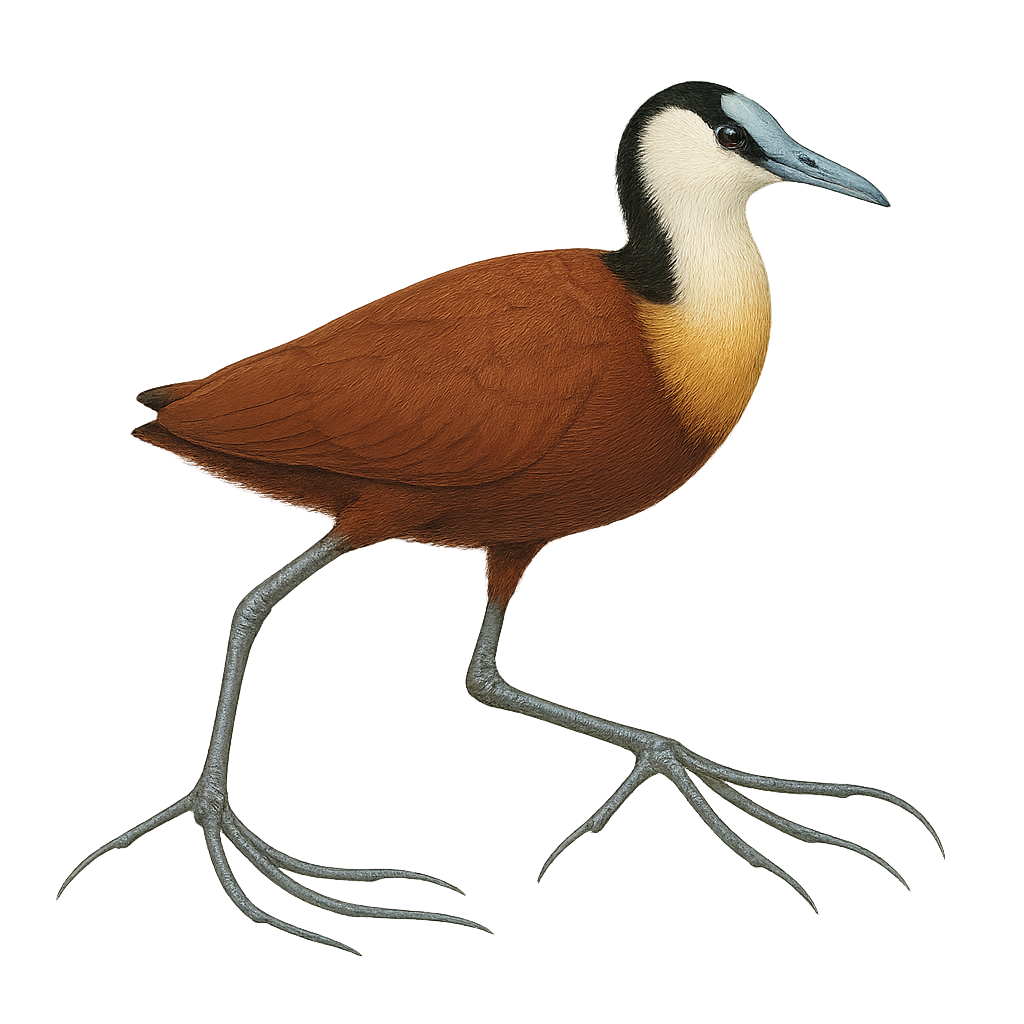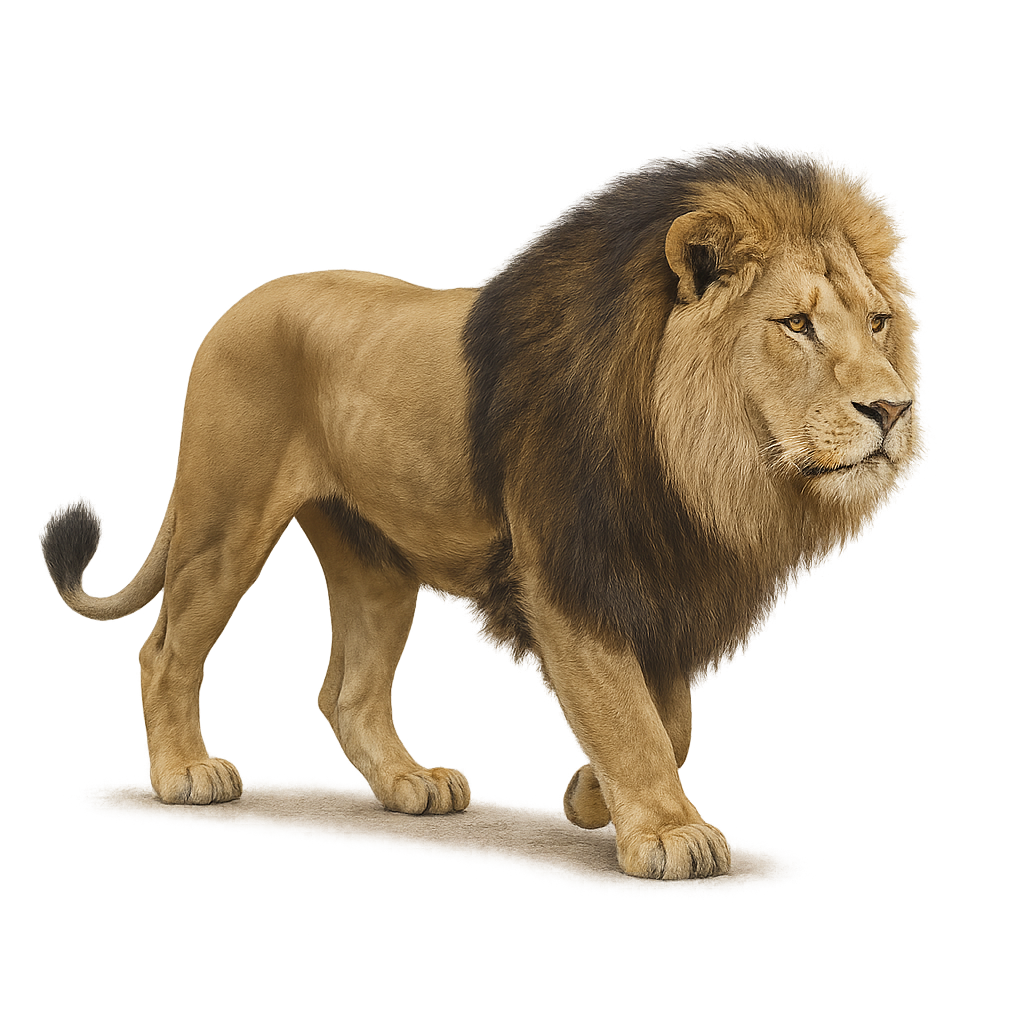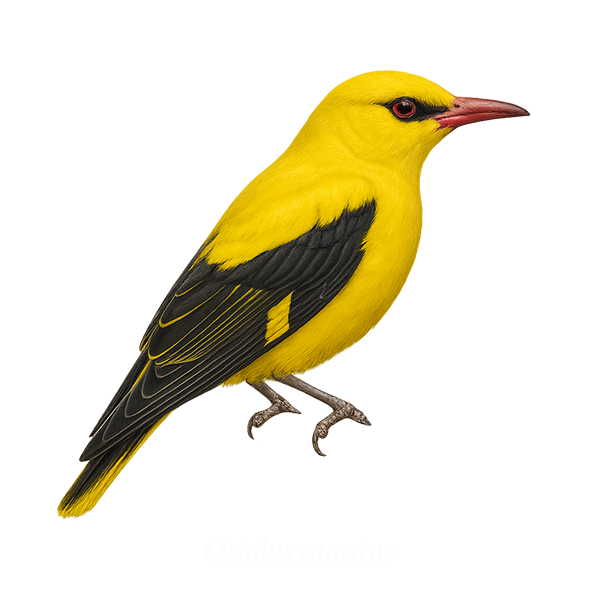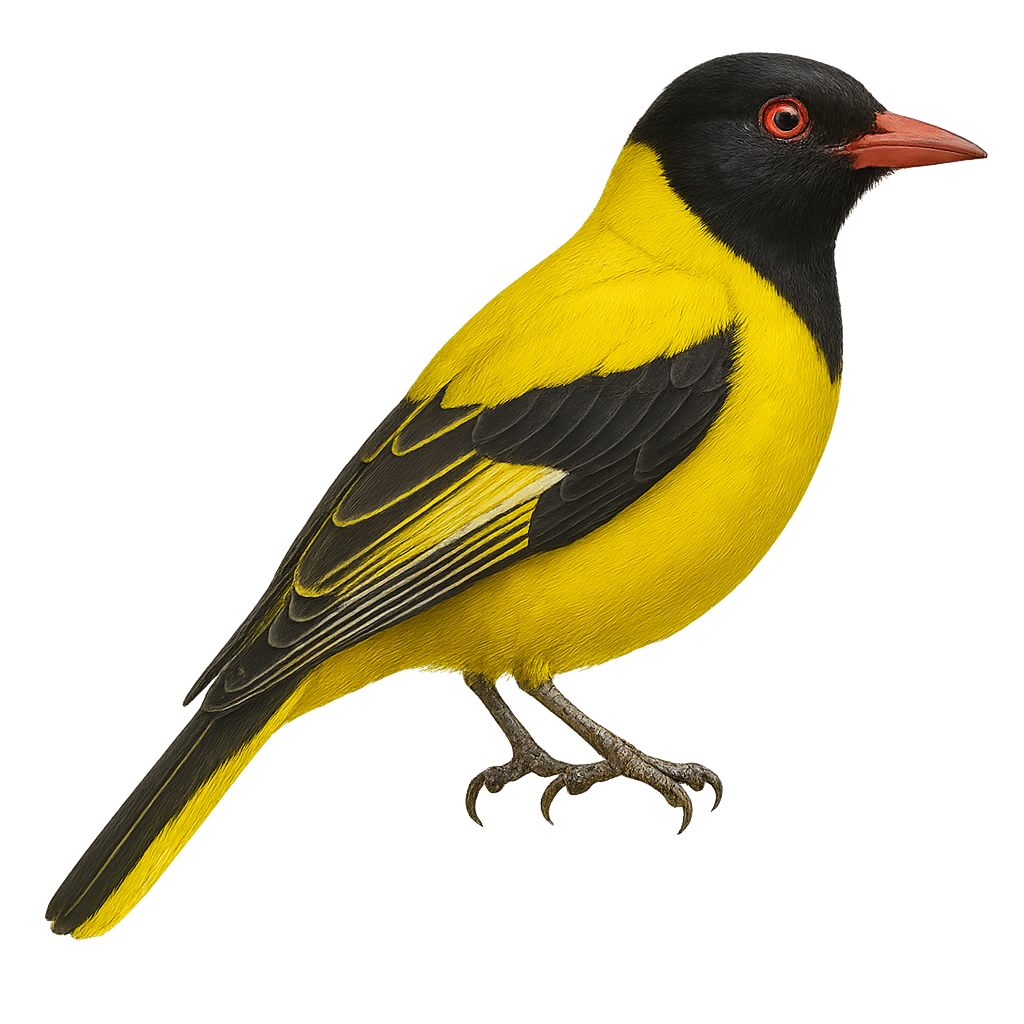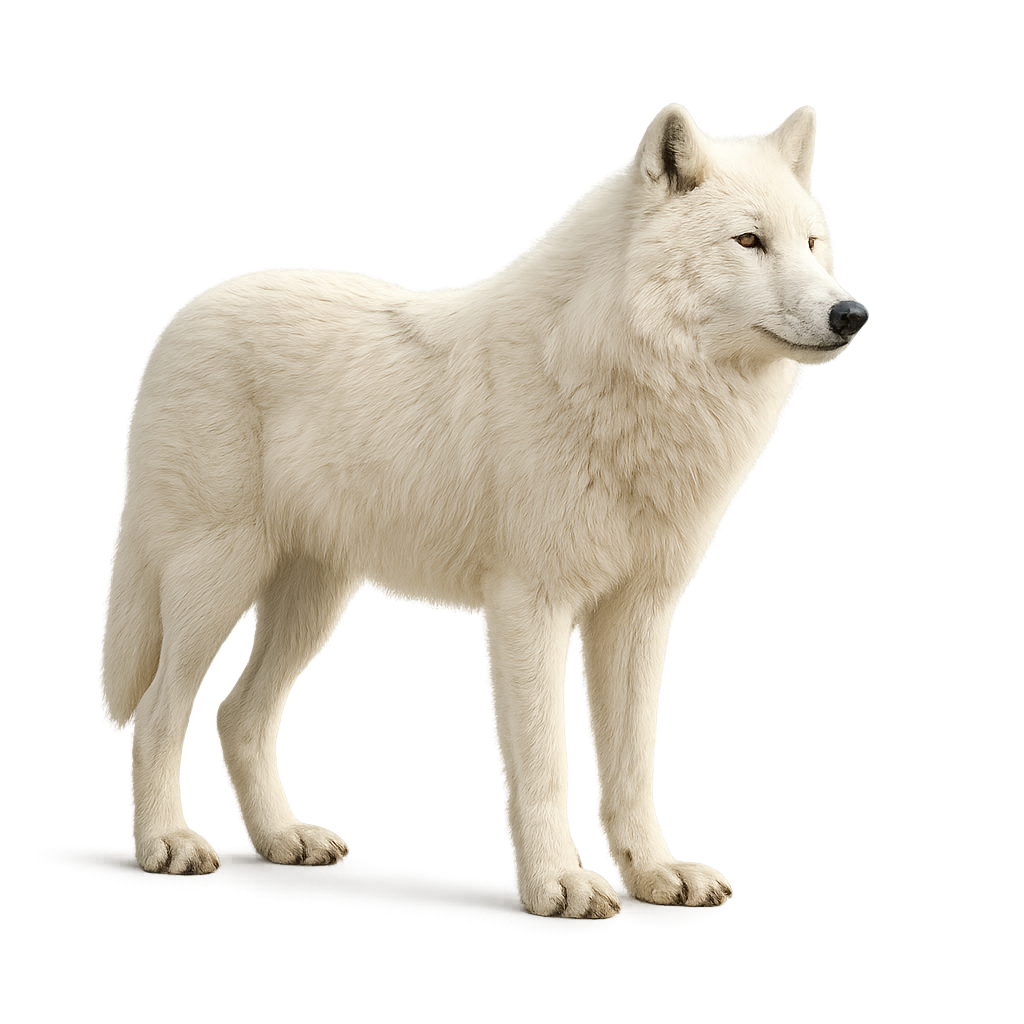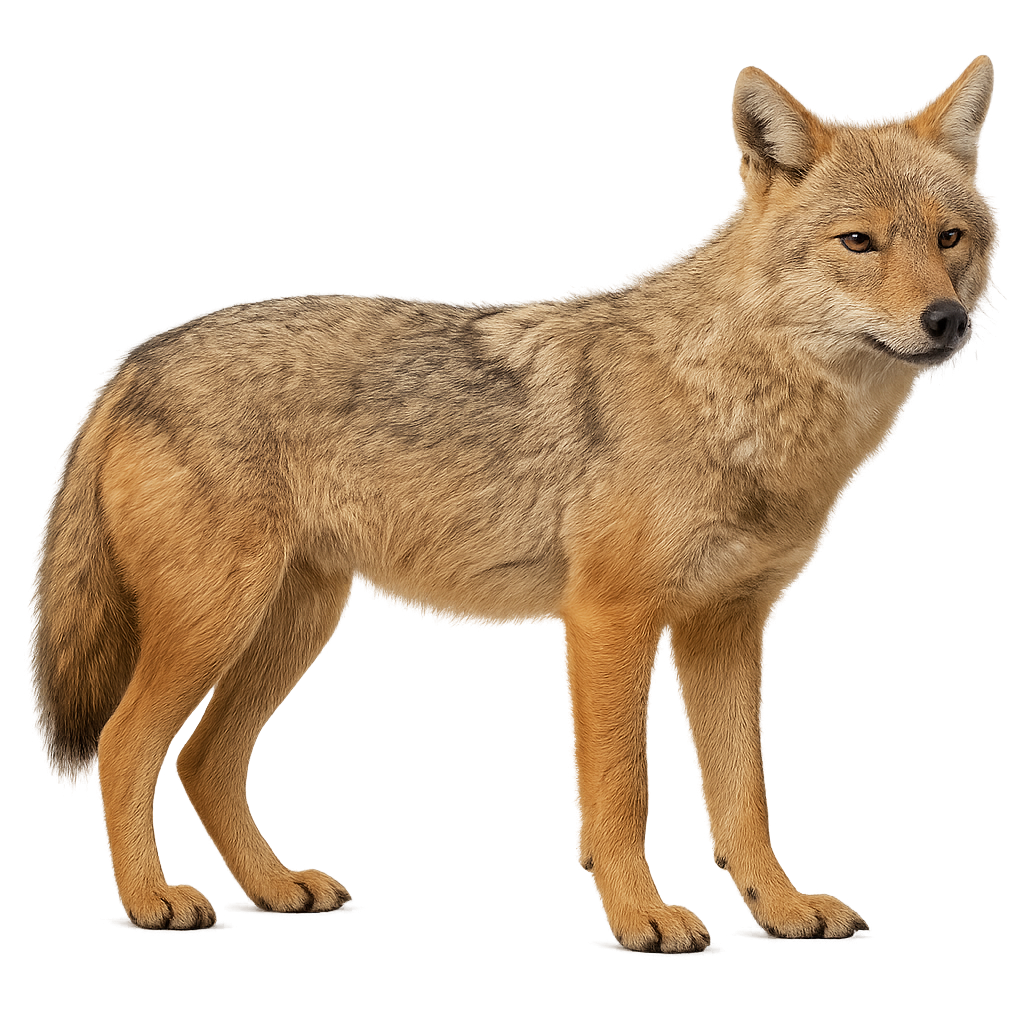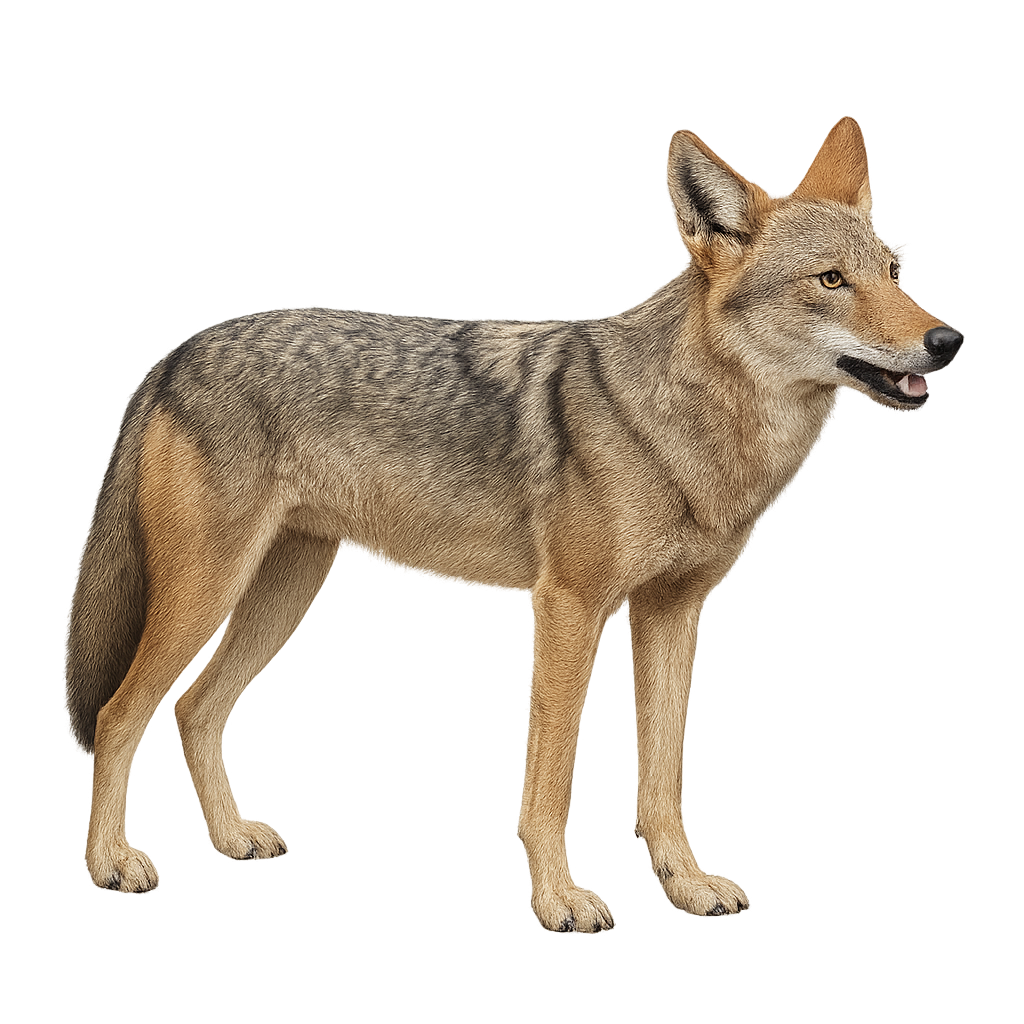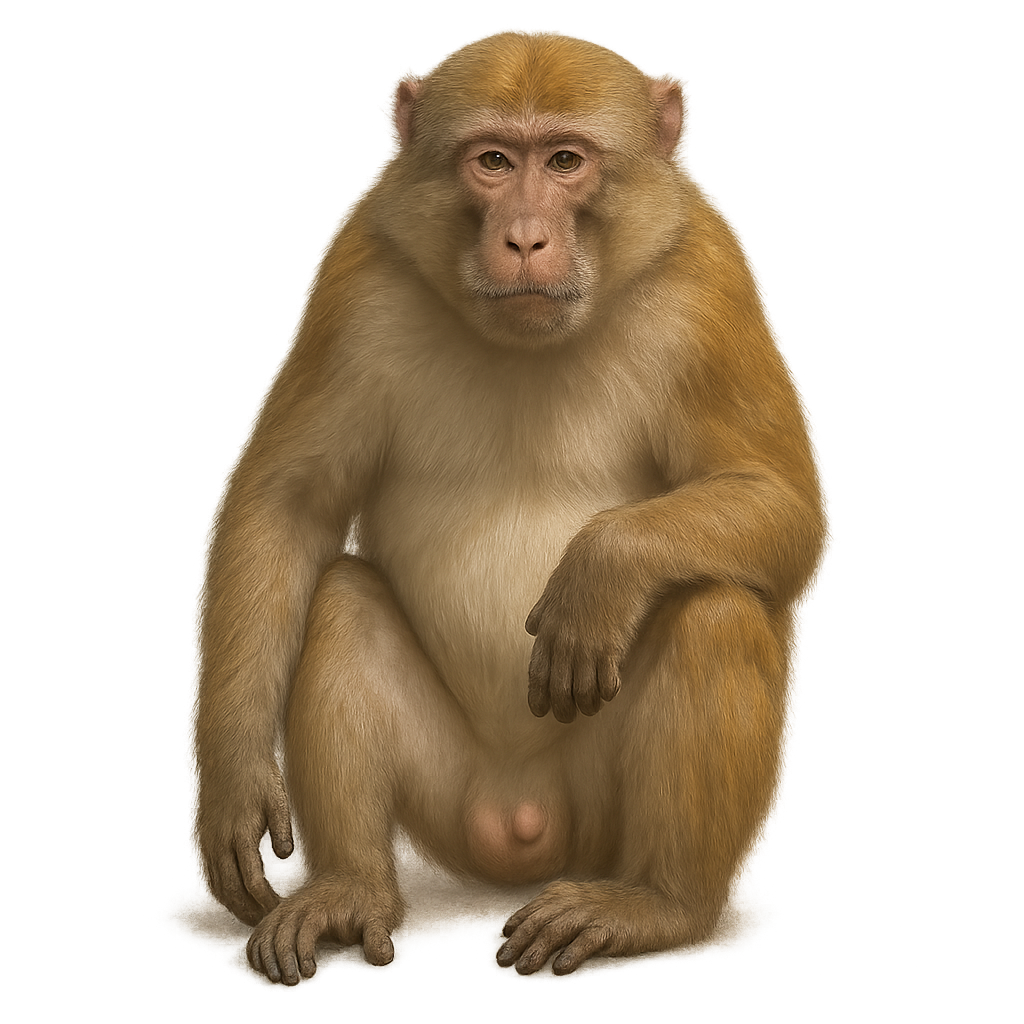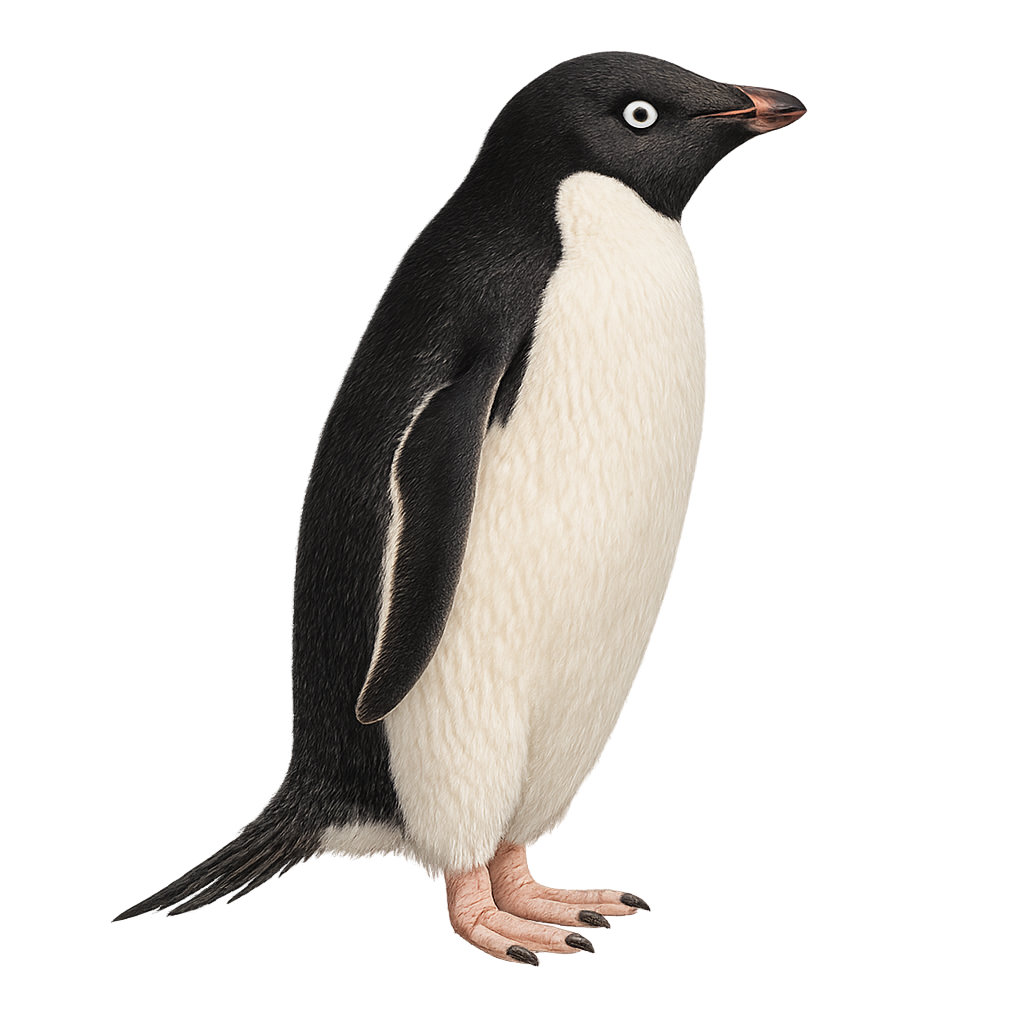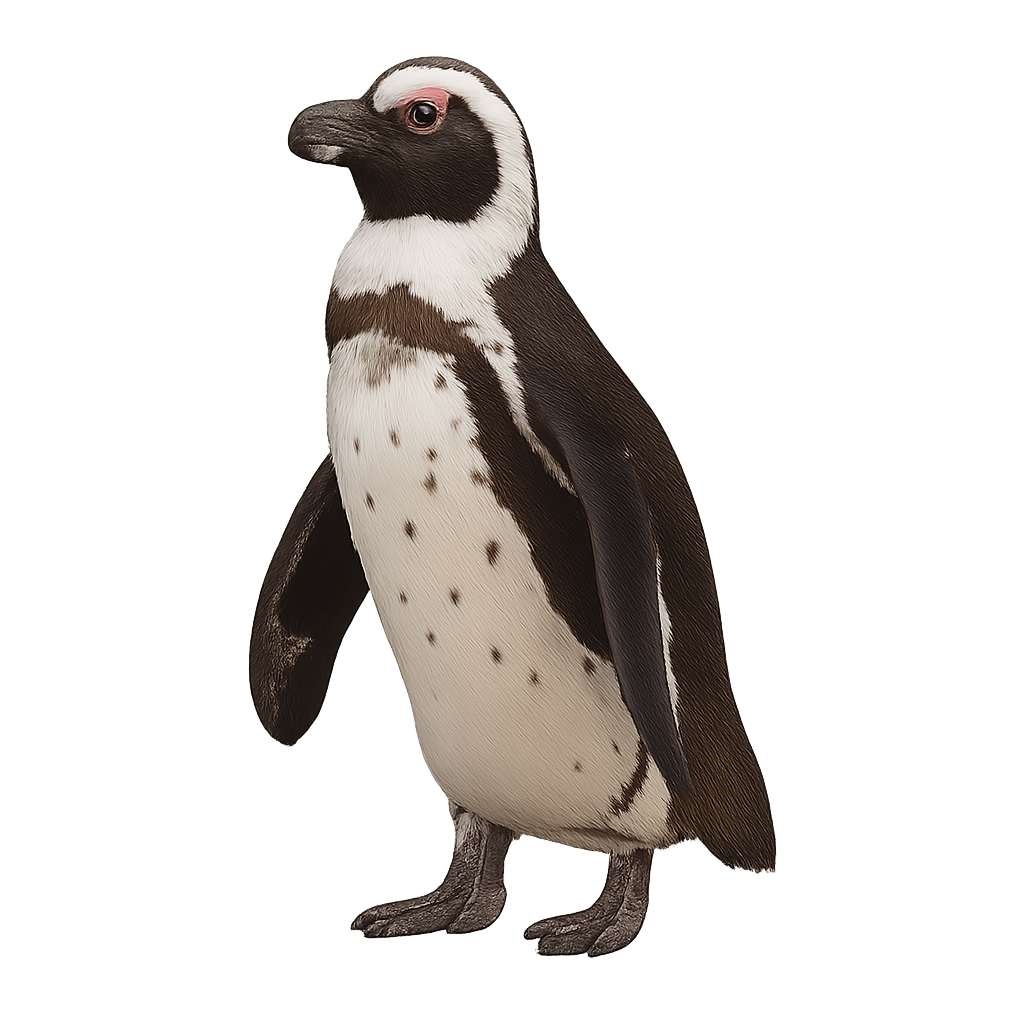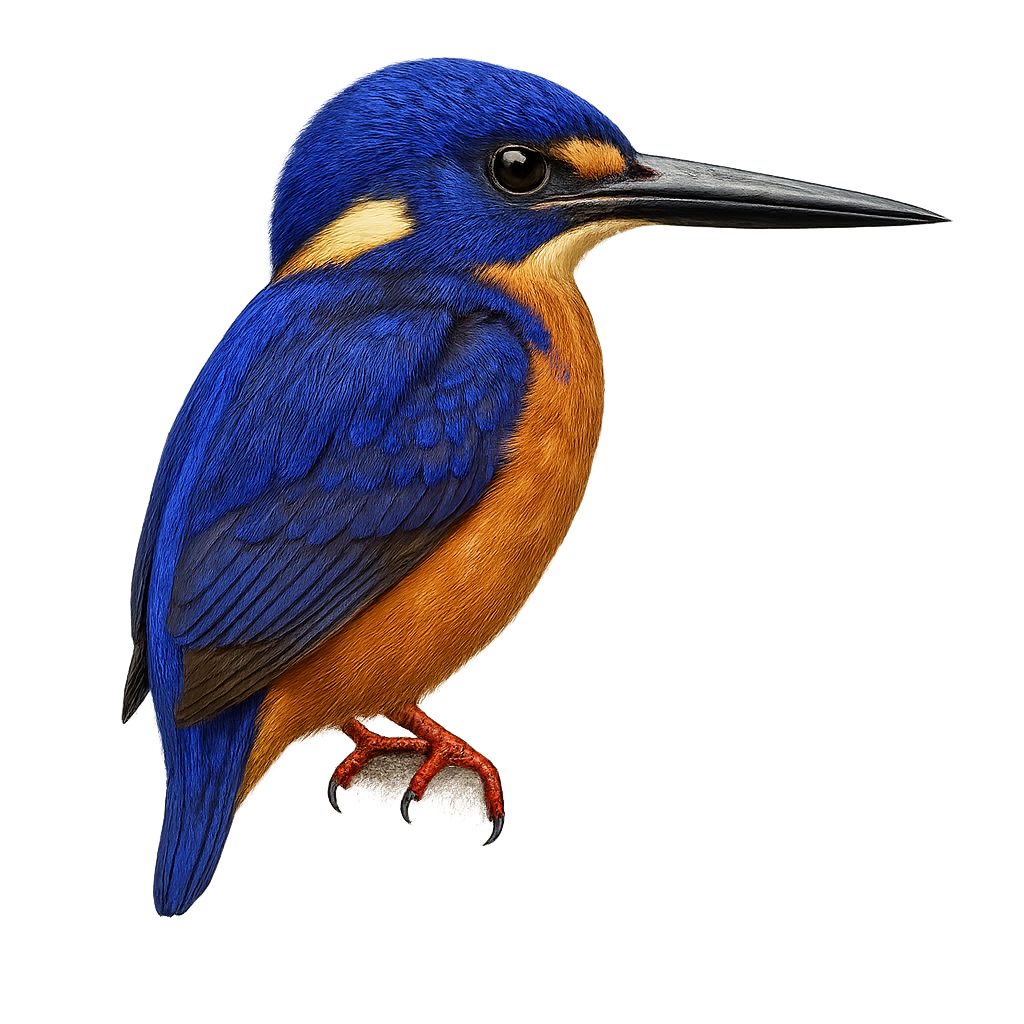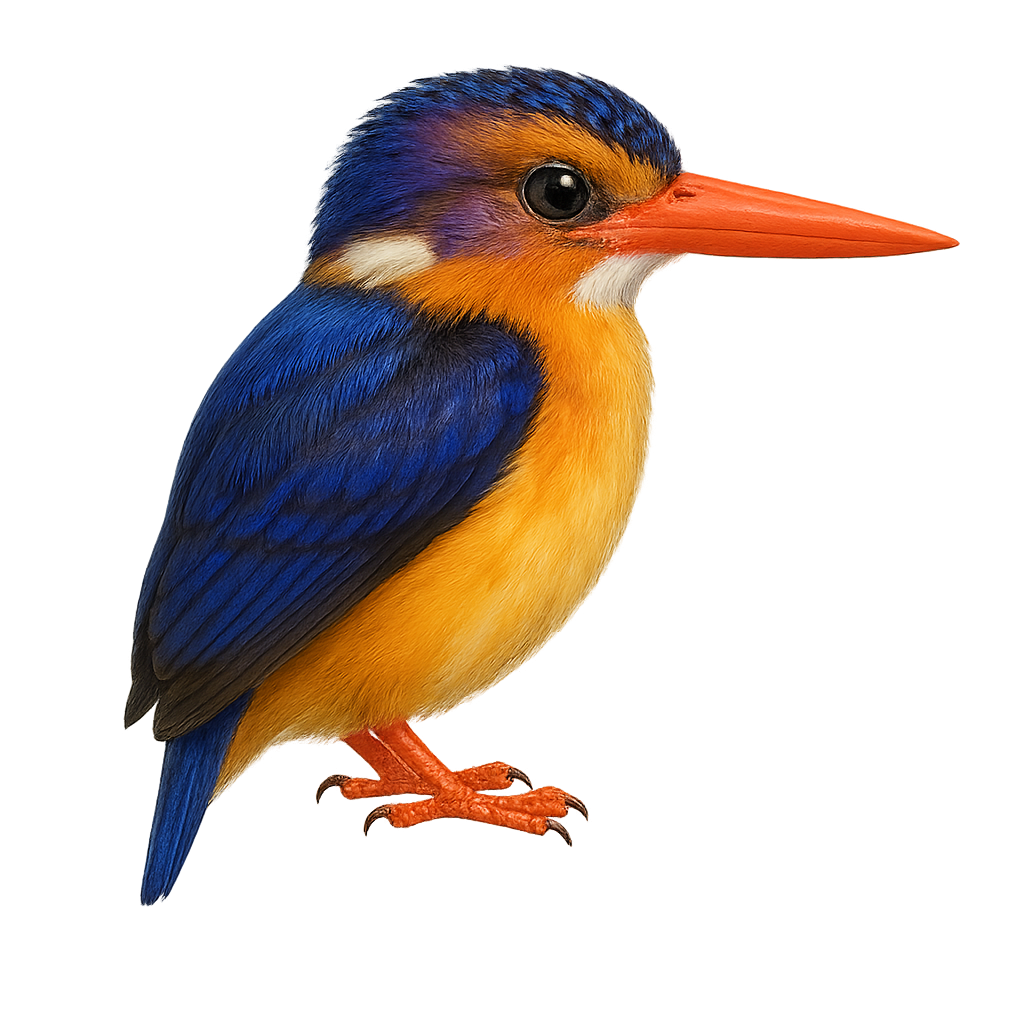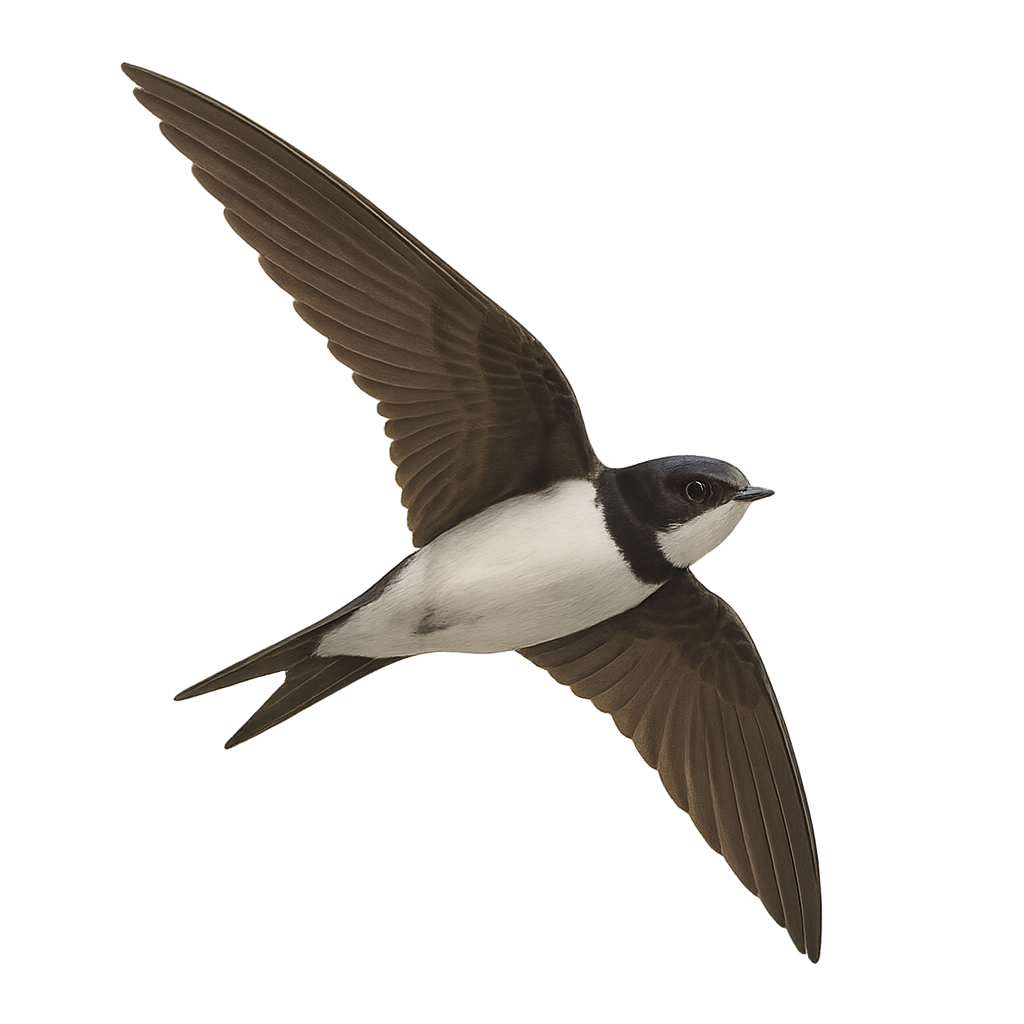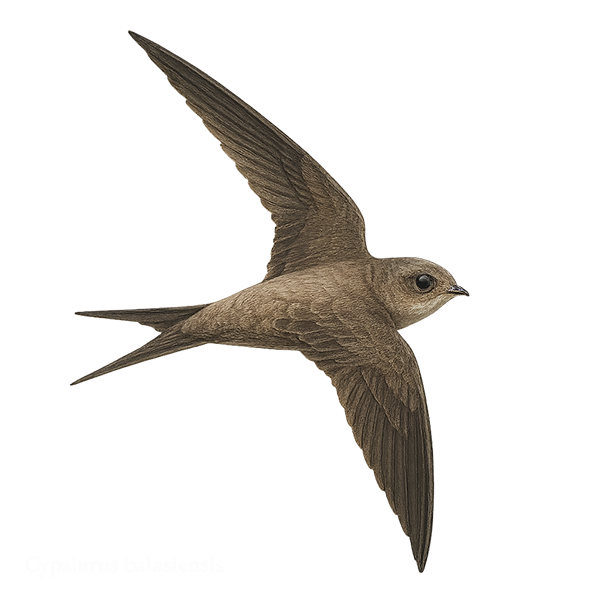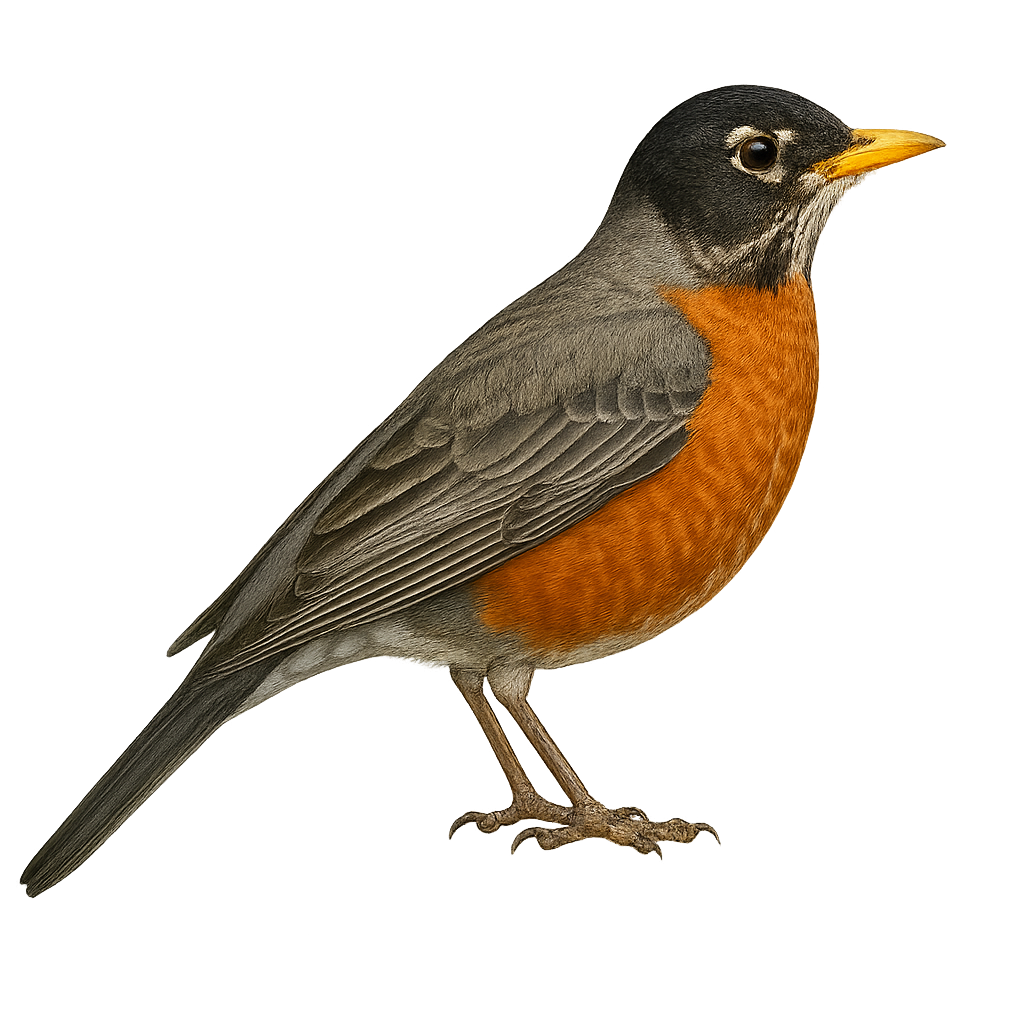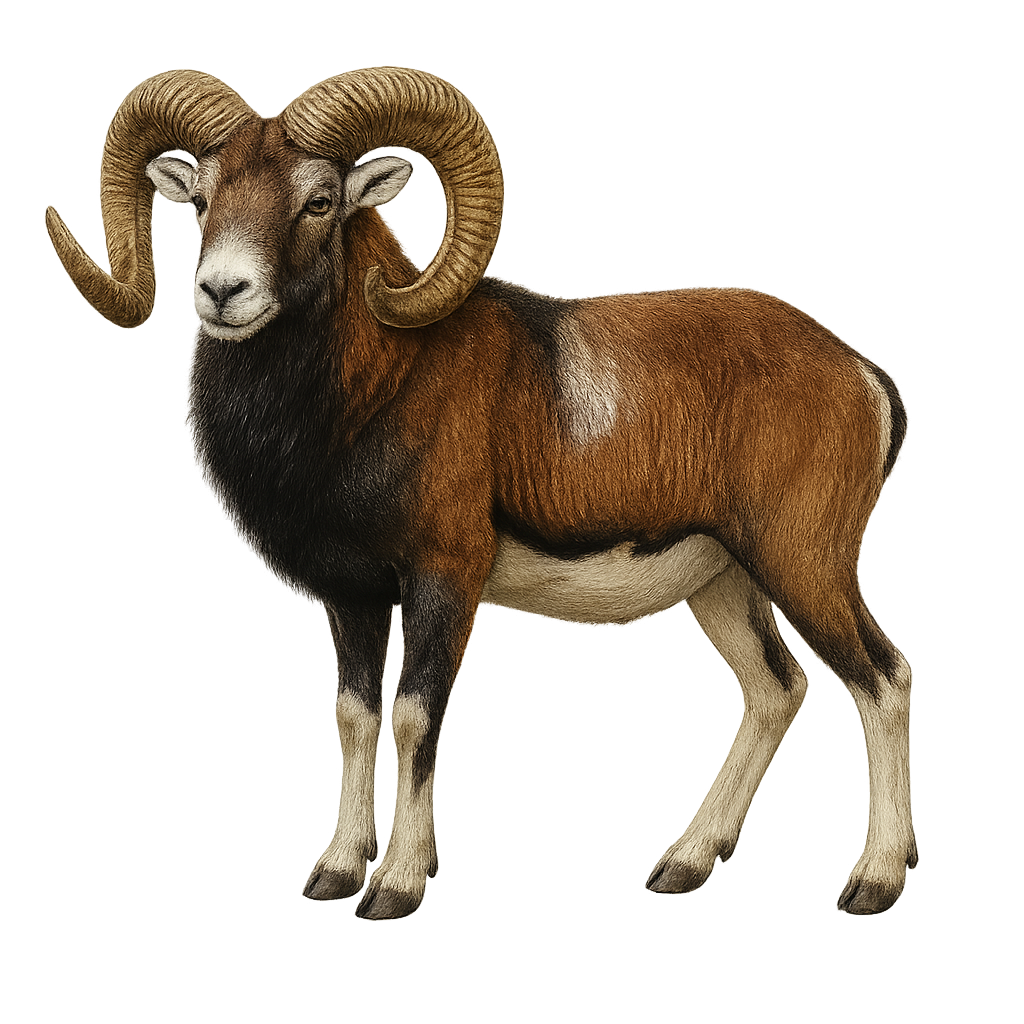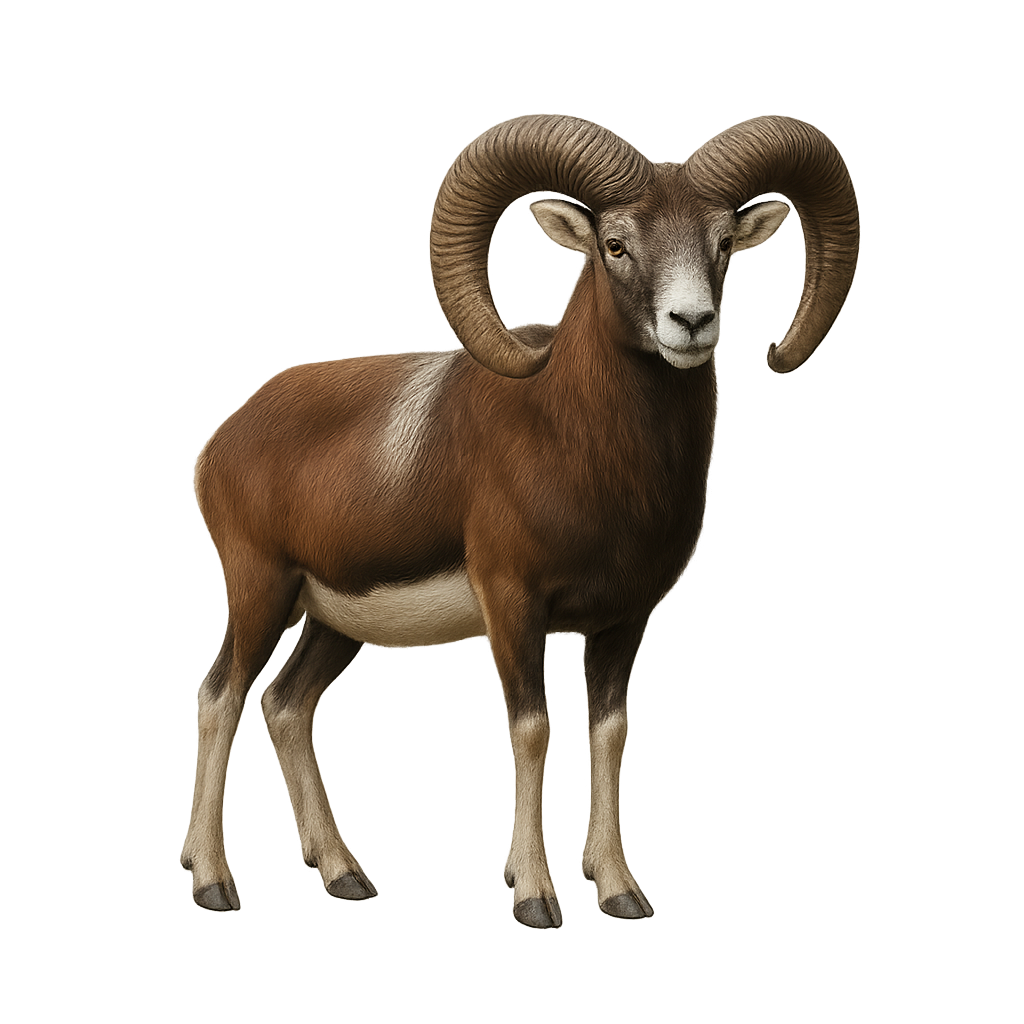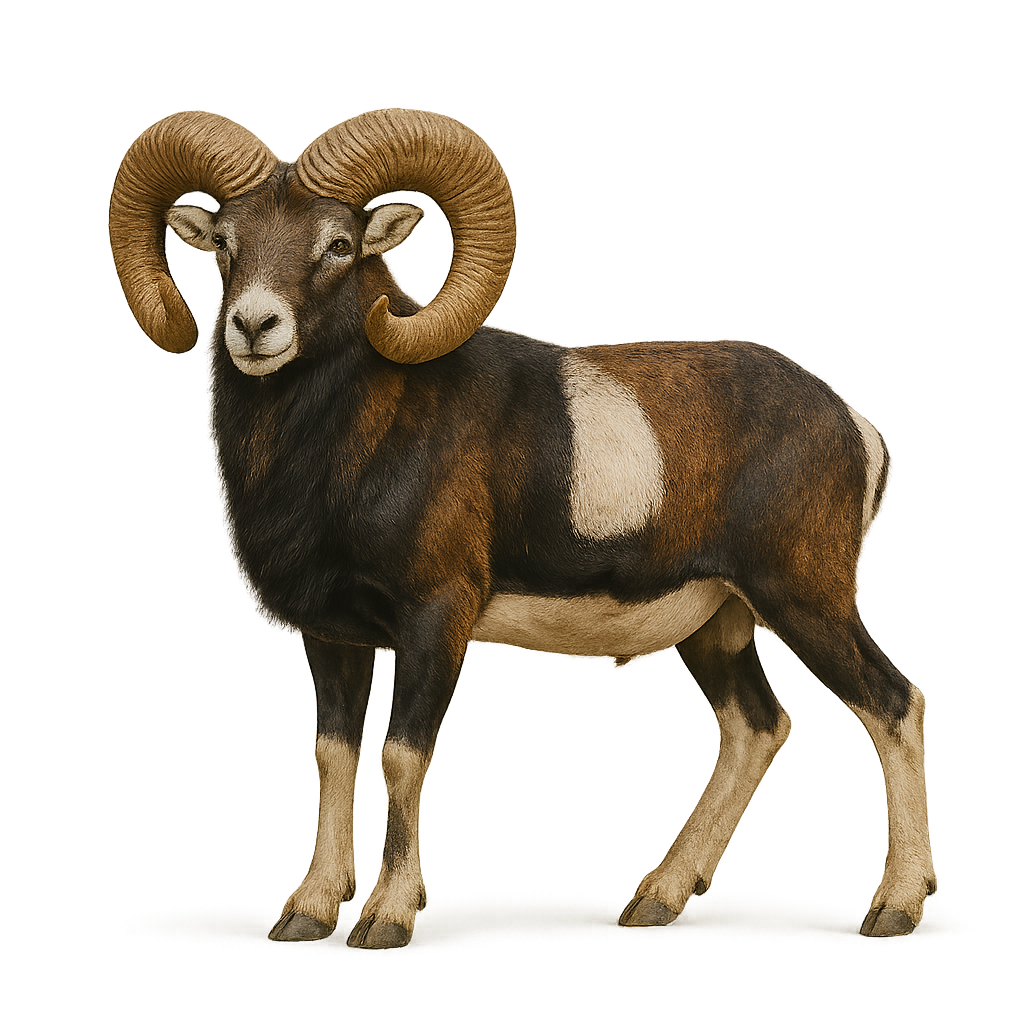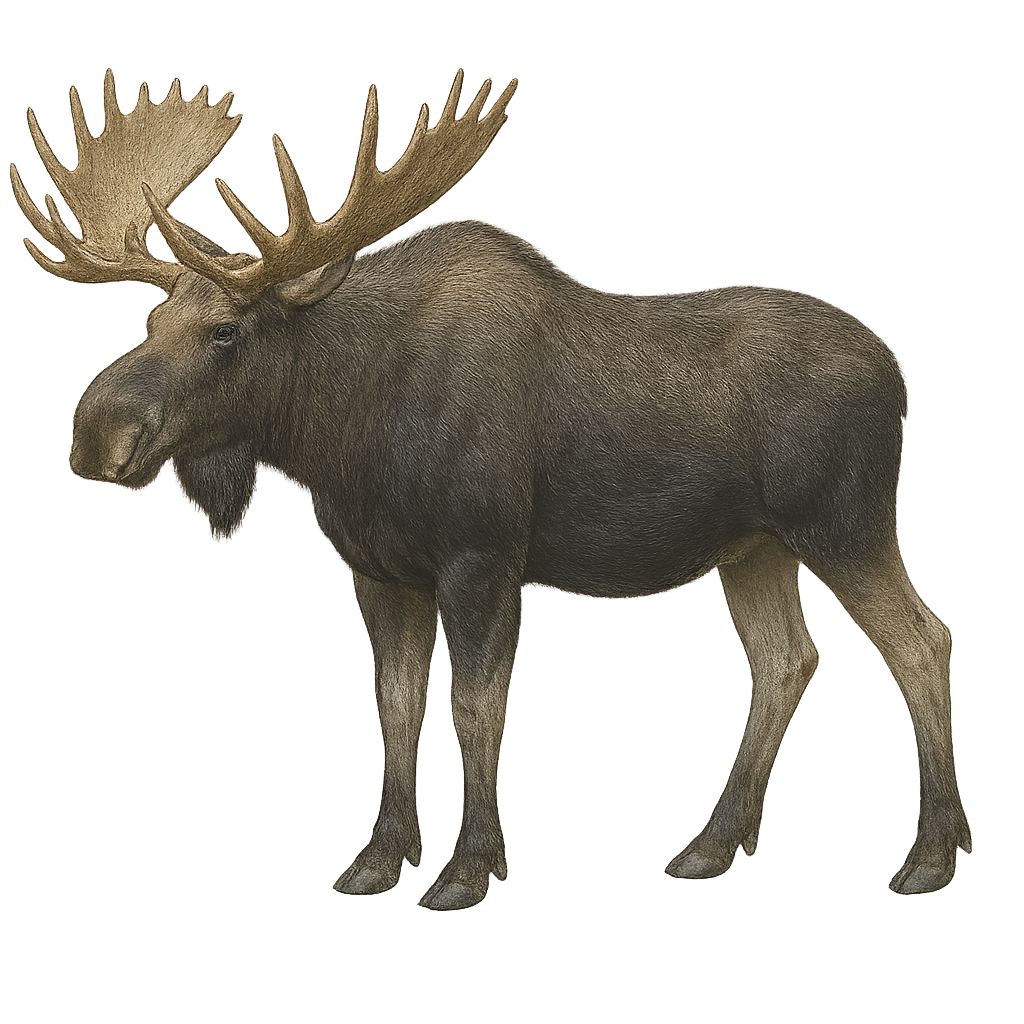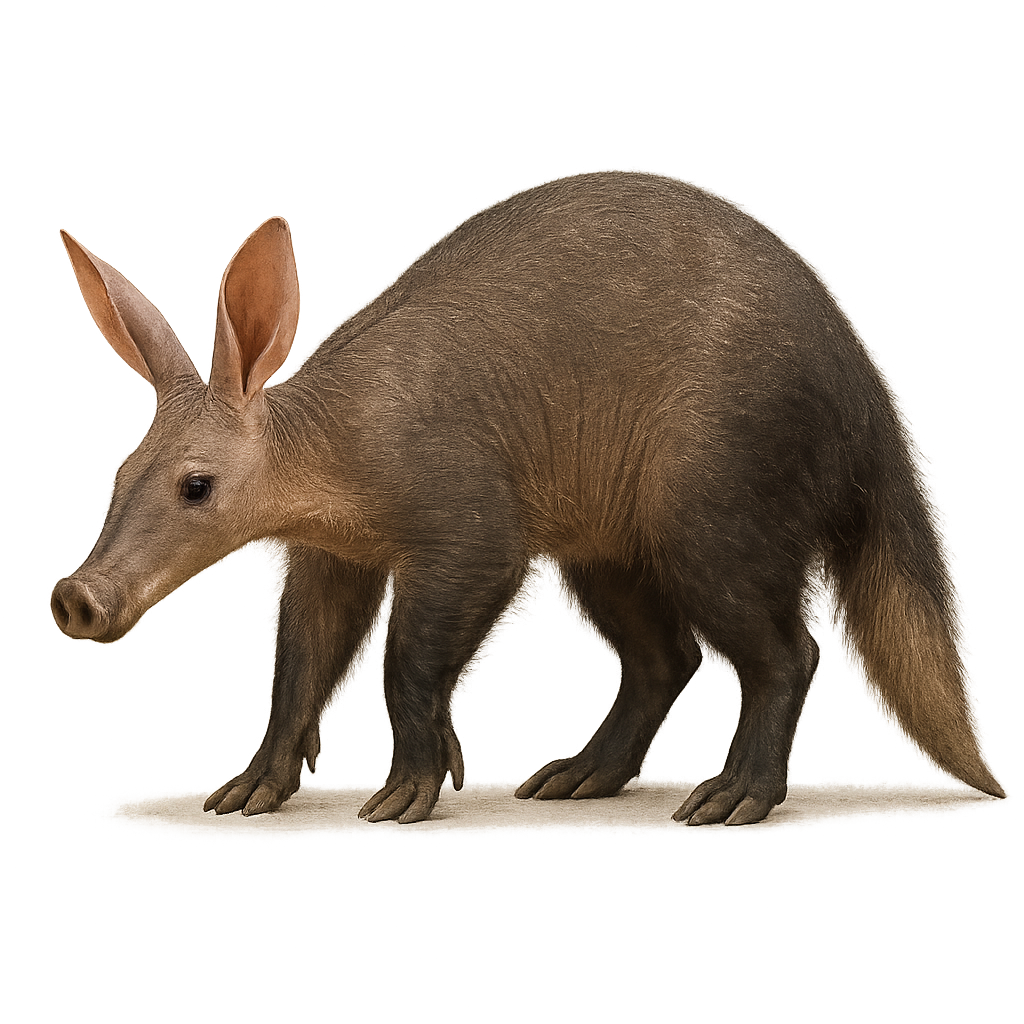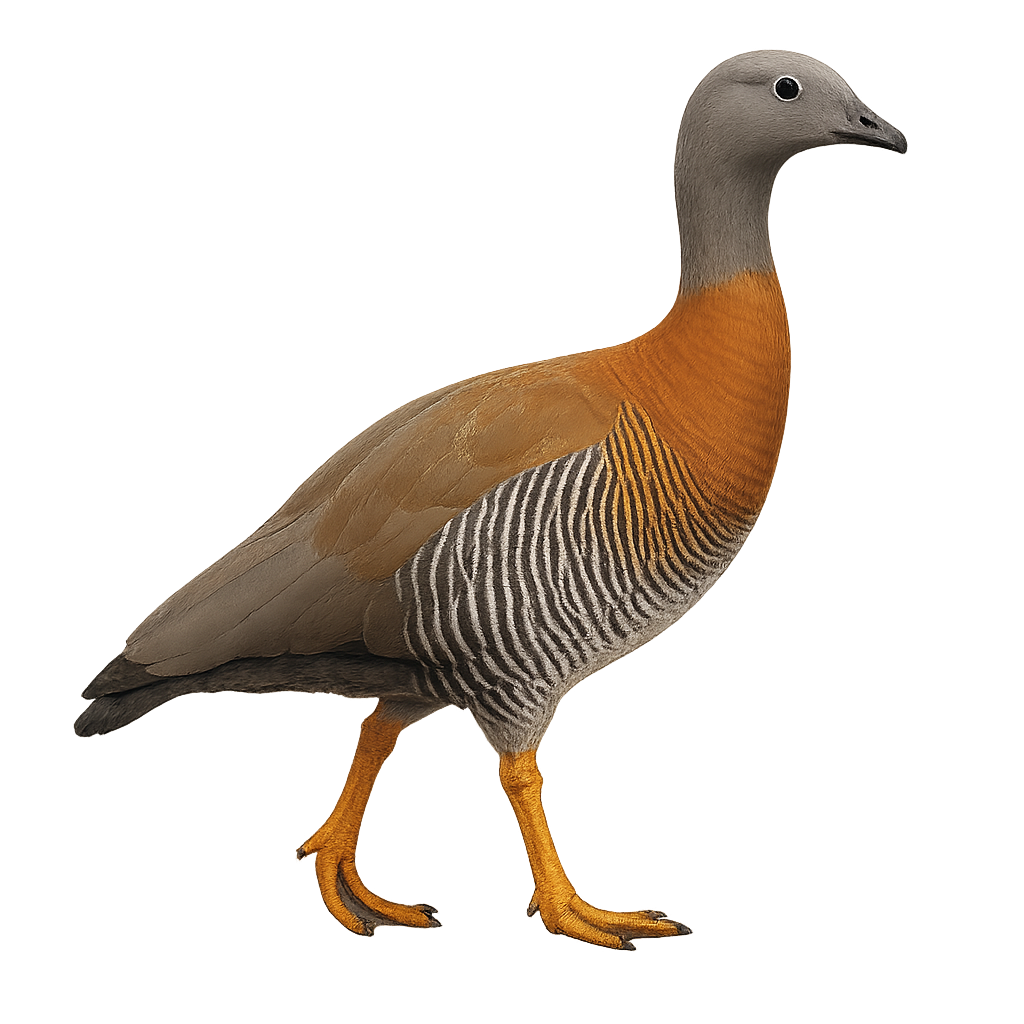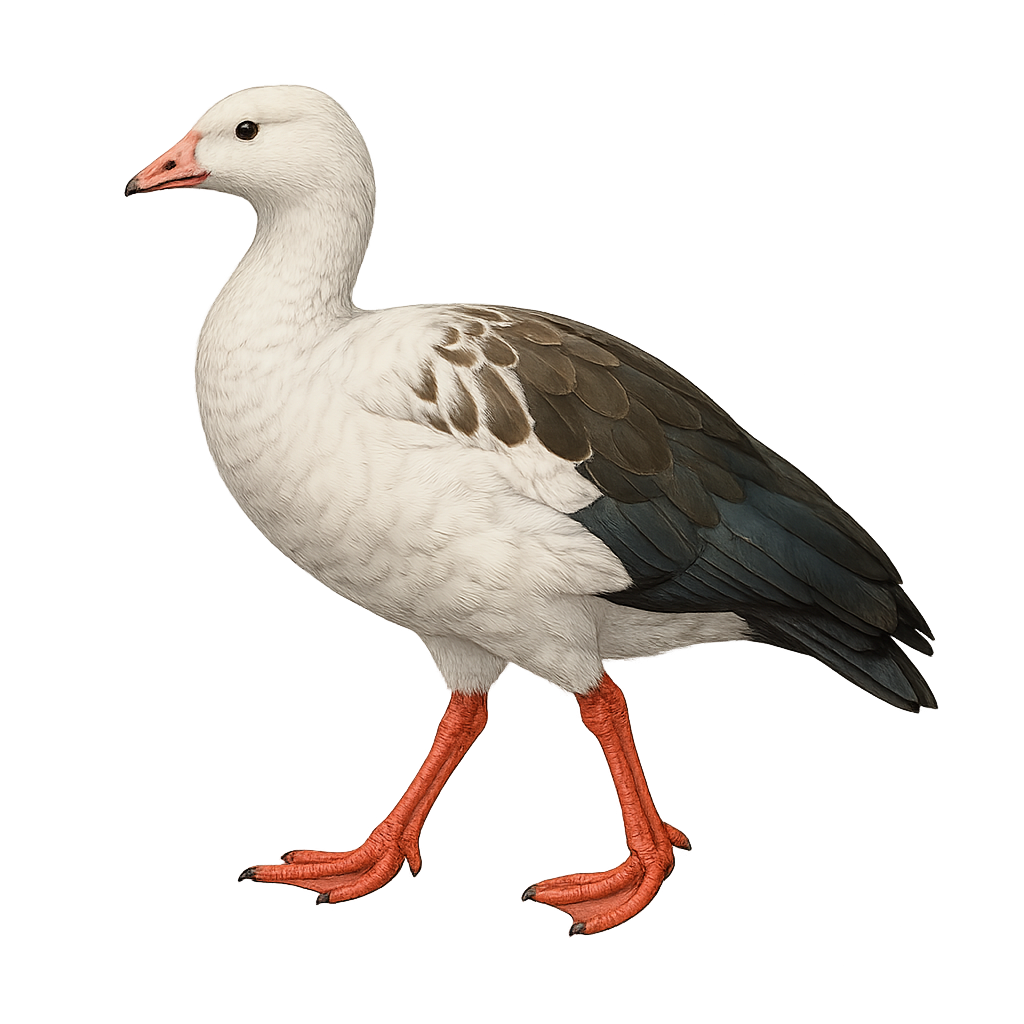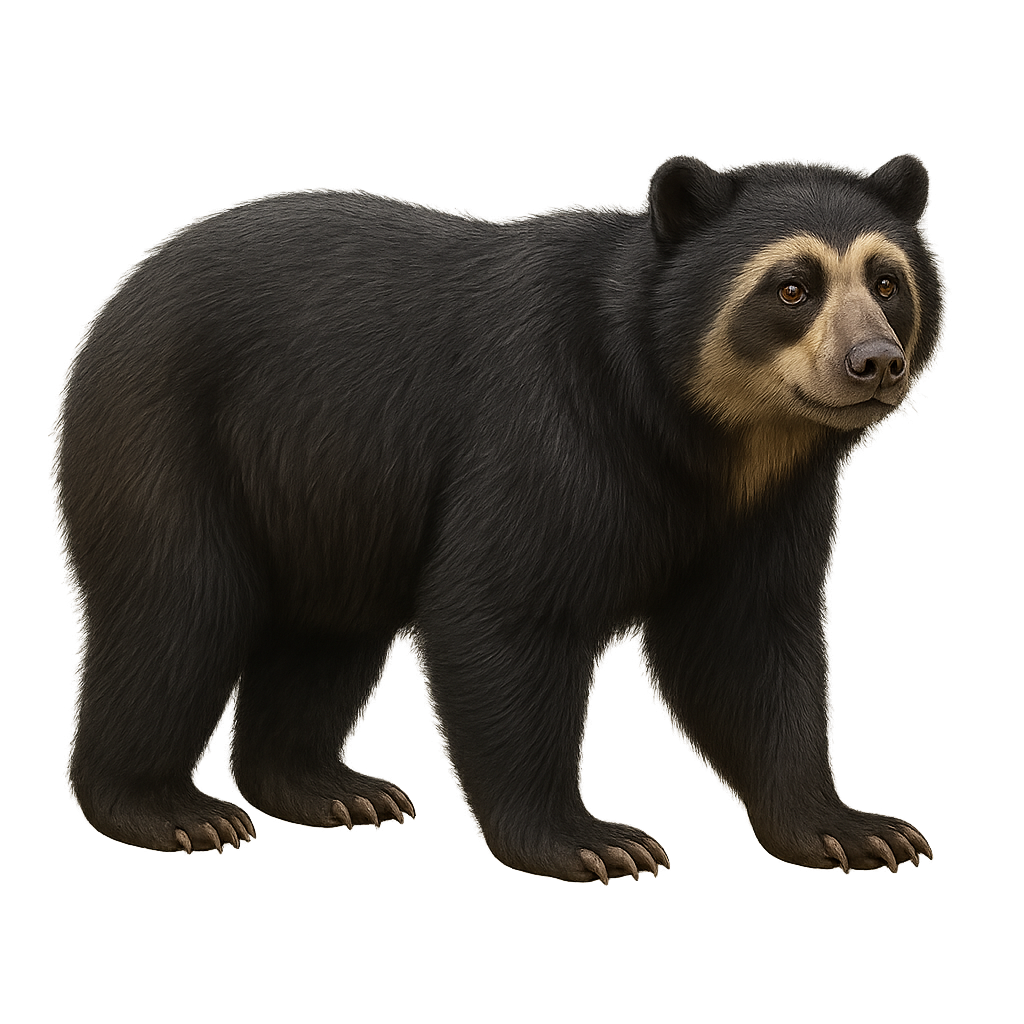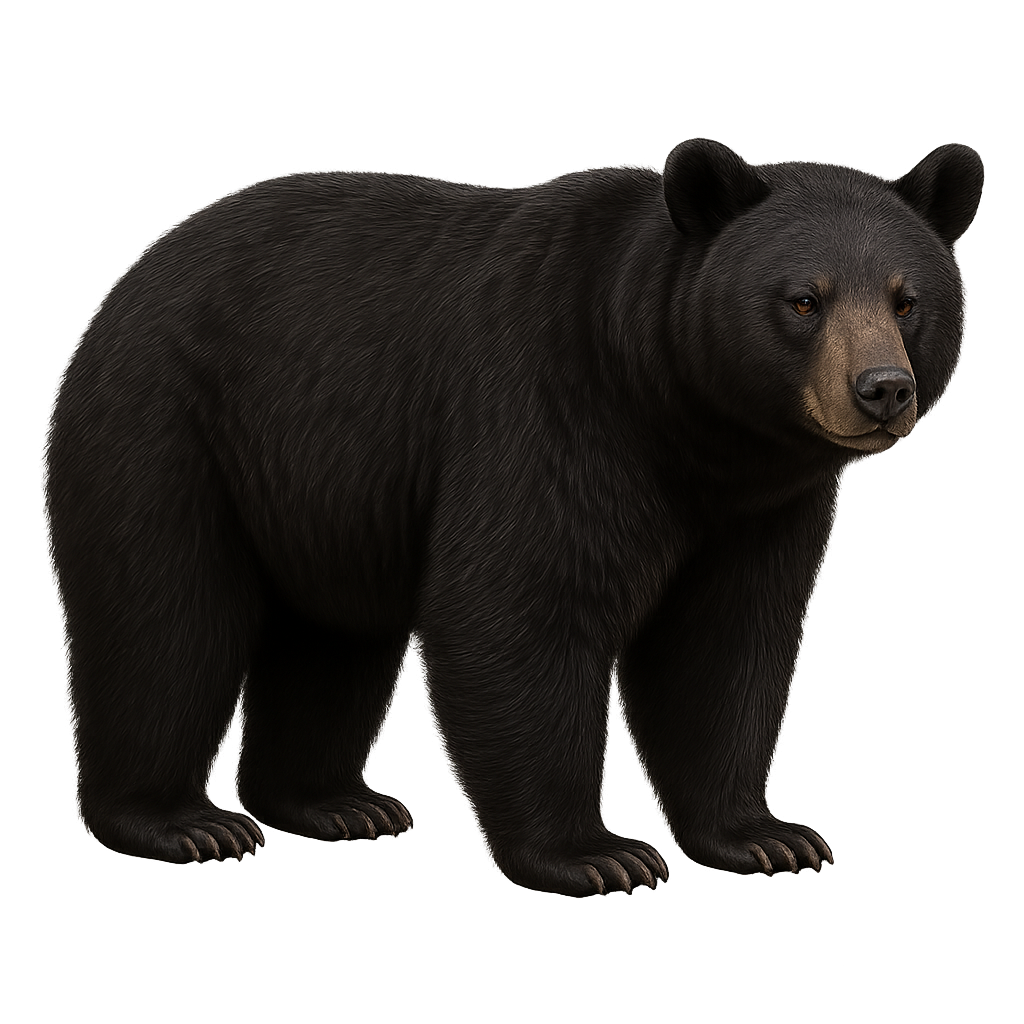The African Jacana, Actophilornis africanus, is a water bird known for its ability to walk on lily pads due to its long toes and claws. It features a golden-brown chest and neck, contrasting with its dark brown back and black wings. The forehead is adorned with a pale blue frontal shield, and the beak is blue-grey. This bird is mainly found in the wetlands of sub-Saharan Africa, where it feeds on insects, mollusks, and seeds. The African Jacana is polyandrous, meaning the female mates with several males, who then take care of incubating the eggs and caring for the young. This species is an excellent indicator of the health of aquatic ecosystems.
The Asiatic lion, or Panthera leo persica, is a subspecies of lion found primarily in the Gir Forest of India. Smaller than its African counterpart, it is distinguished by a less developed mane and a distinctive belly fold. Asiatic lions live in groups called prides, consisting of a few females and their cubs, while adult males are often solitary or in small groups. They primarily hunt ungulates such as sambar and chital. Although their population has increased due to conservation efforts, they remain endangered due to habitat loss and poaching.
The African Golden Oriole, or Oriolus auratus, is a medium-sized bird known for its striking plumage and melodious songs. It features bright yellow plumage with black wings, making it easily recognizable. This bird is primarily found in sub-Saharan Africa, where it inhabits open forests, wooded savannas, and bushy areas. The African Golden Oriole is a partial migrant, moving seasonally to find food resources. It feeds mainly on insects, fruits, and nectar. Its song is a soft whistle, often heard during the breeding season. Although its habitat is threatened by deforestation, it is currently listed as "Least Concern" by the IUCN.
The African Golden Oriole, scientifically known as Oriolus larvatus, is an elegant and colorful bird found primarily in sub-Saharan Africa. It is easily recognizable by its bright yellow plumage contrasted with a distinctive black head. This bird prefers wooded habitats and open forests, where it primarily feeds on fruits, insects, and nectar. The African Golden Oriole is a diurnal bird, most active in the morning and late afternoon. It is often seen alone or in small groups, and its melodious song is an indicator of its presence. Although generally discreet, it can be observed moving between trees in search of food.
The Arctic Wolf is a subspecies of the gray wolf, primarily found in the cold and snowy regions of the Arctic, particularly in northern Canada, Alaska, and Greenland. It measures about 1.5 to 2 meters in length, including its tail, and weighs between 30 and 50 kg, with males generally being larger than females. Its coat is thick and pure white, allowing it to blend perfectly into the snowy landscapes. This wolf has evolved to adapt to the extreme conditions of its environment, with wide paws that allow it to walk in deep snow, and dense fur that protects it from the cold. The Arctic Wolf lives in family groups, typically consisting of 5 to 10 individuals, who hunt together for prey such as caribou, birds, and other mammals. Although this subspecies is adapted to its environment, it is vulnerable to climate change, which affects the distribution of its prey and natural habitat. The Arctic Wolf is also threatened by hunting and habitat loss due to human activity.
The Canis lupus pambasileus, commonly known as the Alaskan wolf, is a subspecies of the gray wolf primarily inhabiting the wild regions of Alaska and the Yukon. Known for its large size and thick fur, this wolf is well adapted to the harsh climatic conditions of its habitat. It lives in structured packs, allowing it to efficiently hunt large prey such as caribou and moose. The Alaskan wolf plays a crucial role in the ecosystem by regulating prey populations. Although generally wary of humans, it can be observed from a distance in national parks. Its conservation is vital for maintaining the ecological balance of its environment.
The Golden Wolf is a medium-sized canid native to the Middle East and certain regions of East Africa. It measures about 1.2 to 1.5 meters in length, including its tail, and weighs between 11 and 20 kg. Its coat is generally golden yellow or light brown, with black markings on its back and legs, and lighter shades on its belly. It has long, pointed ears and a narrow, elongated head. The Golden Wolf is primarily carnivorous, feeding on small mammals, birds, reptiles, and sometimes fruits. It lives in family groups or small packs and often hunts cooperatively with other members of the group. The Golden Wolf prefers open areas such as savannas, steppes, and mountains and is particularly adapted to semi-arid environments. Although the species is not immediately endangered, it is threatened by habitat loss, human conflict, and competition with larger carnivores such as jackals and lions.
The Canis lupus lupaster, commonly known as the African golden wolf, is a medium-sized canid primarily inhabiting the northern and eastern regions of Africa. It has a dense, golden coat, often interspersed with gray or silver hues, allowing it to blend into the arid and semi-arid landscapes it frequents. This opportunistic predator feeds on a variety of prey, ranging from small mammals to birds, and does not hesitate to scavenge. Although often solitary, it can form pairs or small packs for hunting. Its adaptable behavior and ability to thrive in diverse environments make it a remarkable survivor.
The African clawless otter is a semi-aquatic mustelid, 60–100 cm long, with dark brown fur and a paler throat. Found across tropical and subtropical sub-Saharan Africa, it inhabits rivers, lakes, swamps, and estuaries. An excellent swimmer, it feeds on fish, crustaceans, and molluscs, diving skillfully to capture its prey.
The African Wild Dog is an exceptional social predator, easily recognized by its unique spotted coat, which ranges in color from yellow-orange to black, with irregular markings. It has large, rounded ears and an expressive face. This carnivore primarily lives in organized packs, which allow it to effectively hunt large mammals such as gazelles and impalas. Their hunting strategy is based on cooperation, speed, and endurance, with long and energetic chases.
The African Wild Dog is also known for its social behavior, with pack members maintaining strong bonds through vocalizations, play, and grooming rituals. Unfortunately, this species is endangered due to habitat loss, illegal hunting, and conflicts with humans. It is a protected species, and efforts are underway to preserve remaining populations in wildlife reserves.
The Assam macaque, or Macaca assamensis, is a medium-sized primate native to the forests of Southeast Asia. It is characterized by its gray-brown fur and pink face, often surrounded by a lighter beard of hair. This monkey lives in complex social groups led by a dominant male. It is primarily arboreal but often descends to the ground to forage. An omnivore, its diet includes fruits, leaves, insects, and small animals. The Assam macaque plays a crucial role in seed dispersal, thus contributing to the health of its ecosystem. Unfortunately, it is threatened by deforestation and hunting, leading to a decline in its populations.
The Atlantic Puffin is a seabird characteristic of the coasts of the North Atlantic, particularly around the British Isles, Greenland, Iceland, and parts of Canada. It measures about 30 cm in length, with a wingspan of 50 to 60 cm, and weighs between 300 and 500 g. It is distinguished by its black and white plumage and its colorful beak, which is bright orange with red and blue bands during the breeding season. Outside of the breeding period, the Atlantic Puffin loses its bright colors and its beak becomes paler. This bird is an excellent diver, primarily feeding on fish and crustaceans, which it catches by diving underwater with great agility. The Atlantic Puffin is also known for its social behavior, gathering in large colonies during breeding on cliffs or remote islands. Although it is widely distributed, the Atlantic Puffin is sensitive to human disturbances, such as disruptions caused by tourism, and ocean pollution, particularly oil spills.
The Adélie Penguin is an iconic bird of Antarctica, easily recognizable by its black and white plumage and elegant demeanor. Standing about 70 cm tall, it is perfectly adapted to life in the extreme conditions of its icy habitat. This penguin primarily feeds on krill, fish, and small crustaceans, which it skillfully captures in the frigid waters. Adélie Penguin colonies are often very dense, with thousands of individuals gathering during the breeding season. They build their nests with stones and typically lay two eggs. Parents take turns incubating the eggs and feeding the chicks. Although their population is currently stable, climate change and decreasing food resources pose potential threats to their future.
The African penguin, also known as the Jackass penguin, is a species of penguin found along the southwestern coast of Africa, primarily in South Africa and Namibia. It is easily recognizable by its black-and-white plumage and the large pink band around its eyes. This penguin is an excellent swimmer, feeding mainly on fish and crustaceans. While it is an iconic species of the region, it is endangered due to habitat loss, pollution, and overfishing.
The Alpine Marmot is a large rodent primarily found in the mountainous regions of Europe, especially in the Alps, the Pyrenees, and the mountains of Italy. It measures about 40 to 60 cm in length, with a tail of 10 to 15 cm, and weighs between 3 and 7 kg, with females generally being a little smaller than males. Its coat is thick and typically brown-gray, with a lighter belly, allowing it to blend into its rocky and grassy environment. The Alpine Marmot lives in burrows dug into the ground, where it takes refuge to sleep, escape predators, and hibernate during the winter, a period when it enters a state of torpor for several months. During the summer season, it primarily feeds on grasses, roots, flowers, and berries. The Alpine Marmot is a social animal, typically living in family groups or colonies. While its population remains relatively stable, it is threatened by climate change and human development of its natural habitat.
The Azure Kingfisher, Ceyx azureus, is a small, brightly colored bird, predominantly vivid blue with orange hues on its belly. It primarily inhabits the waterways and rivers of Australia and New Guinea. This kingfisher is known for its speed and agility when diving to catch fish, its main food source. It nests in burrows dug into riverbanks. Though discreet, it is often spotted thanks to its sharp, distinctive call. Its compact size and striking plumage make it a favorite subject for birdwatchers and wildlife photographers.
The African Pygmy Kingfisher is a small bird, measuring about 12 cm in length. It is easily recognizable by its colorful plumage, with bright blue shades on its back and wings, and an orange hue on its belly and chest. Its beak is relatively long and pointed, adapted for catching small aquatic prey. This kingfisher primarily inhabits humid forests and wooded areas near water, where it feeds on small fish, insects, and crustaceans. Although often solitary, it can sometimes be seen in pairs, especially during the breeding season. Its discreet presence and rapid flight make it difficult to spot, but its high-pitched, piercing call can reveal its presence.
The Alpine Swift is a large swift measuring between 20 and 23 cm in length, with a wingspan of 51 to 58 cm. It has a white belly and throat, separated by a brown pectoral band, and a brown-gray back. It is often confused with the Common Swift, but it is larger and more robust. A migratory species, it winters in tropical Africa and returns to Europe between March and April. It primarily nests in inaccessible rock cavities but can also occupy urban sites. It feeds exclusively on insects captured in flight, often at high altitudes. It is monogamous, and pair bonds can last over ten years. In Switzerland, it is present from late March to late October. A protected species, it is considered potentially threatened due to the loss of its natural nesting sites.
The Asian Palm Swift, Cypsiurus balasiensis, is a small, elegant bird commonly found in the tropical regions of South and Southeast Asia. It is easily recognizable by its brownish-grey plumage and forked tail. This swift is particularly adapted to life in open areas, often near palm trees, where it builds its nest using plant materials glued with its saliva. It primarily feeds on insects caught in flight, showcasing remarkable agility. Its swift and graceful flight is a fascinating sight. Although often in motion, it can be seen resting on tree branches or power lines.
The American Robin, or Turdus migratorius, is a well-known bird in North America, easily identified by its bright orange-red belly and dark gray back. Measuring about 25 cm in length, it is often seen in gardens, parks, and forests. This bird is famous for its melodious song, especially noticeable in spring. The American Robin is a partial migrant, moving south in winter. It primarily feeds on earthworms, insects, and fruits. Its adaptability to various habitats and its not very shy behavior make it a favorite among birdwatchers.
The Armenian Mouflon, Ovis orientalis gmelini, is a medium-sized mammal belonging to the Bovidae family. It is characterized by its spiral horns, more developed in males than in females. Its coat is generally brown with lighter shades on the belly and legs. This mouflon is mainly found in the mountainous regions of Armenia and Iran, where it adapts to rugged terrains and variable climatic conditions. It lives in herds, often separated by sex, and primarily feeds on grasses, herbs, and shrubs. The Armenian Mouflon plays an important ecological role as an herbivore, contributing to the regulation of vegetation in its natural habitat.
The Asian mouflon, or Ovis orientalis, is a mammal from the Bovidae family, native to the mountains of Western Asia. It is recognizable by its large, spiraled horns, especially prominent in males. Its coat ranges from brown to gray, with lighter shades on the belly and legs. Mouflons live in herds, often segregated by sex, and navigate rugged, rocky terrains. They are herbivores, primarily feeding on grasses and low-growing plants. Their social behavior is complex, with established hierarchies within groups. Males compete during the rutting season to assert dominance and gain access to females.
The Mouflon oriental is a small wild sheep found primarily in the mountains of Europe, the Middle East, and Central Asia. It measures between 70 and 80 cm in height at the withers and weighs between 40 and 80 kg, with males generally being larger and more imposing than females. What distinguishes the Mouflon oriental is the presence of large, curved horns in males, while females have smaller and less pronounced horns. Their coat is generally reddish-brown in the summer, with a white belly and a darker mane along the back, which becomes thicker and fuller in the winter. The Mouflon oriental primarily inhabits mountainous areas, forests, and meadows, where it feeds on grasses, leaves, shrubs, and roots. It is an excellent climber and moves easily across rocky and steep terrain. While its population remains stable, the Mouflon oriental may be threatened by habitat loss, hunting, and competition with domesticated livestock.
The Alaskan moose, or Alces alces gigas, is the largest member of the deer family. It is distinguished by its impressive size, reaching up to 2.1 meters at the shoulder and weighing over 700 kg. Its wide, flat antlers, which can span up to 2 meters, are characteristic of males. The Alaskan moose primarily inhabits the boreal forests and wetlands of Alaska and Canada. It is well adapted to cold climates thanks to its thick coat. As a herbivore, it feeds on leaves, bark, and aquatic plants. Although generally solitary, it can be seen in small groups during the rutting season.
Native to the savannas and forests of sub-Saharan Africa, the Aardvark is a nocturnal mammal that primarily feeds on termites and ants. It has a long sticky tongue which it uses to extract insects from their burrows. This mammal is easily recognizable by its large ears, elongated snout, and sturdy limbs. Although relatively discreet, the Aardvark is threatened by habitat loss and poaching.
The Ashy-headed Goose, or Chloephaga poliocephala, is a bird species belonging to the Anatidae family. It is primarily found in the southern regions of South America, particularly in Argentina and Chile. This bird is characterized by its ashy-gray head contrasting with its brown body and white wings. Males and females have similar plumage, although females are slightly smaller. The Ashy-headed Goose inhabits wet grasslands, marshes, and lake edges, where it feeds mainly on aquatic vegetation and grasses. It is often seen in pairs or small family groups. Although its conservation status is currently "least concern," it is sensitive to habitat degradation.
The Andean Goose, or Chloephaga melanoptera, is a striking bird of the Andes, known for its black wings contrasting with its white plumage. It inhabits mountainous regions of South America, mainly in Peru, Bolivia, Chile, and Argentina. This robust bird is well adapted to high altitudes, often seen near high-altitude lakes and marshes. Andean Geese are monogamous and form lifelong pairs. They primarily feed on aquatic vegetation and grasses. Their behavior is generally not very shy, allowing for easy observation. However, their remote and challenging habitat makes study more complex.
The Asiatic Black Bear, also known as the Tibetan Bear, is a medium-sized mammal found primarily in the mountains of Central Asia, the Indian subcontinent, China, and Russia. It measures between 1.2 and 1.8 meters in length and weighs between 60 and 200 kg. Its coat is typically black, with a distinctive white "V"-shaped mark on its chest. The Asiatic Black Bear is an omnivore, feeding on fruits, berries, roots, small animals, insects, and occasionally carrion. It is an excellent climber and spends much of its time in trees, where it feeds and rests. While the Asiatic Black Bear remains relatively common in some regions, it faces numerous threats such as habitat loss, illegal hunting, and poaching for its body parts.
The Andean Bear, also known as the spectacled bear, is a large mammal found primarily in the tropical forests and mountains of South America, particularly in Colombia, Venezuela, Ecuador, and Peru. It measures about 1.5 to 2 meters in length and weighs between 100 and 200 kg. Its coat is generally black, with white or cream markings around its eyes in the shape of spectacles, hence its name. The Andean Bear is an omnivore, primarily feeding on fruits, plants, honey, and insects, but it may also eat small mammals or birds. It is an excellent climber, using its powerful claws to move through trees in search of food. Although its population remains stable in some areas, the Andean Bear is threatened by habitat loss, deforestation, and poaching.
The American Black Bear is a large carnivore primarily found in North America, in forests, mountains, and wooded areas. It measures between 1.5 and 2.5 meters in length and weighs between 45 and 250 kg, depending on the subspecies and habitat conditions. Its coat ranges from black to light brown, and it has a short muzzle and a large head. The Black Bear is an omnivore, primarily feeding on fruits, berries, nuts, roots, fish, small mammals, and sometimes carrion. It is also an excellent climber and a skilled swimmer, capable of moving through trees and crossing rivers in search of food. While its population remains relatively stable, the Black Bear is threatened by habitat loss, vehicle collisions, and hunting.


